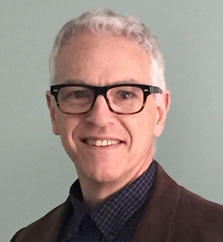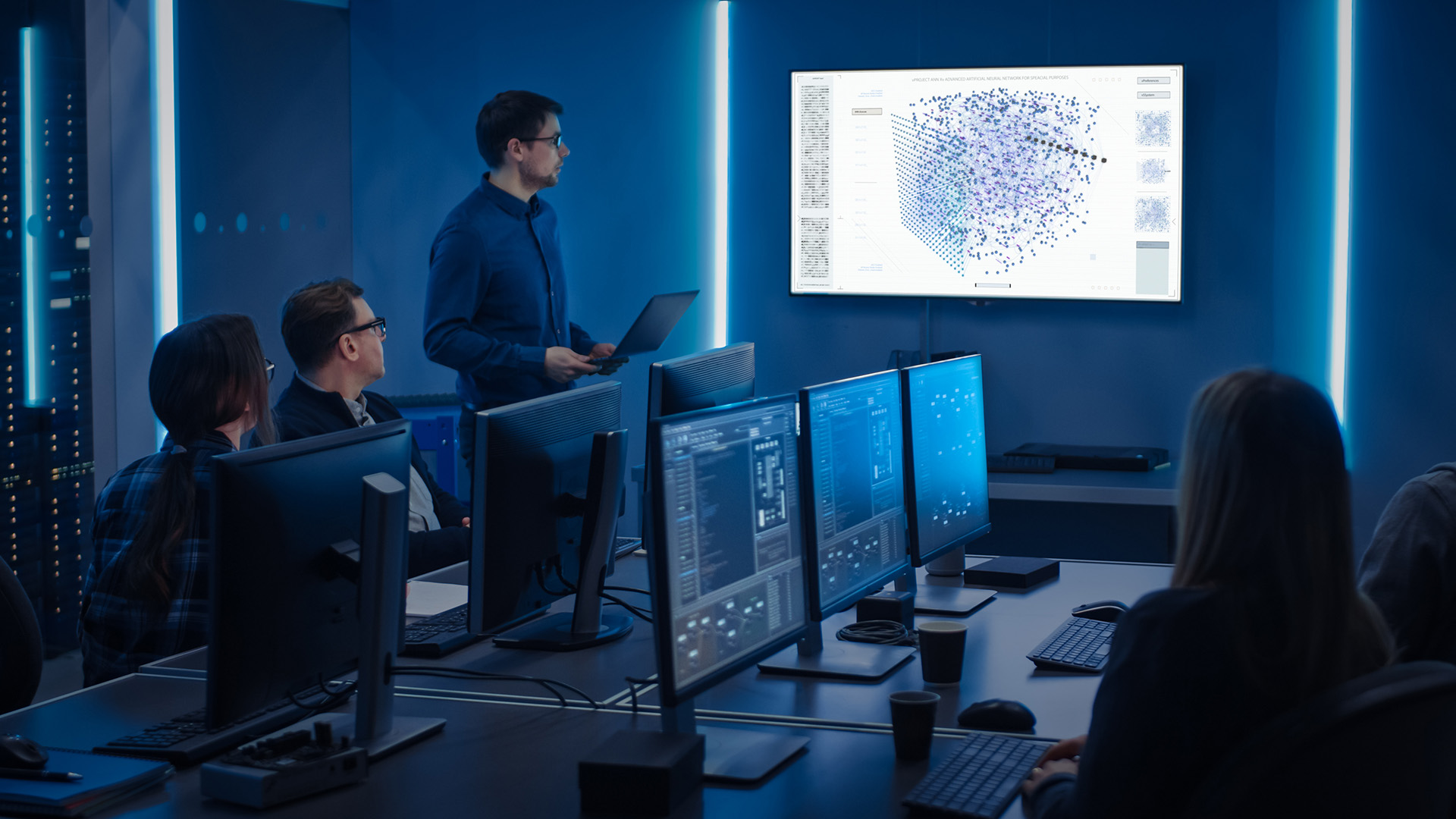It’s All Academic

Welcome to the first edition of the quarterly Automation Alley Academic Newsletter. As we crawl back from self-imposed exile and re-engage the masses, nothing can mask our enthusiasm. This newsletter, hopefully, embraces that enthusiasm and the best of what our academics have to offer the communities within our reach.
It is my hope that this publication will inform, unite, and activate the academic community within Automation Alley. Our schools and universities are using I4.0 technologies emerging from R&D activities while leading the way with innovations that optimize institutional efficiency and minimize the spread of Covid-19; it’s never been a better time to fight a pandemic. Bring it on!
Automation Alley itself has developed its own R&D activity within which many academics have chosen to contribute. The nascent activity offers professors and researchers the opportunity to collaborate across the spectrum of more than 1600 manufacturing, tech, government, and professional services organizations as they adjust to, and adopt Industry 4.0 technologies. When a client of Automation Alley expresses a desire to solve a problem, we research the repository for the appropriate resource and connect the client with the resource. It’s worth noting that a significant expansion of international academics and clients is expected by mid-year.
As the organization embraces an expanded international presence, greater collaboration within the World Economic Forum’s thirteen global AMHUB’s is beginning to take shape. Recently, Automation Alley hosted the South Korean AMHUB in curated round-robin style meetings with Automation Alley Academics. The meetings were productive and opportunistic.
Automation Alley academics and client R&D institutions exhibited a disproportionate influence in the collaborations generating many new ideas and commitments for further downstream partnerships. The conversations revealed innovative ways to bring efficiencies to 3D printing technology and materials, the structure and implementation of cybersecurity and blockchain technology, solutions in biomedical materials and the basic structural formation of Decentralized Autonomous Organizations.
Additional meetings with international AMHUBs will be encouraged, and to the extent they begin to take shape, I’ll reach out again to the organization’s strong academic base for participation. The strength of the academic community at Automation Alley is becoming exclusive and pursued, and I’ll continue to promote interaction with events and curate collaborations when appropriate.
The organization has expanded the approach to the Technology in Industry Report – a resource that leans heavily on academic contribution. The release of a single publication in the past will be replaced by three successive releases focusing on software transformation, distributed manufacturing and 3D Printing. This year, the University of Michigan and Oakland University have made professors available to address the first two, while client Fraunhofer will publish a white paper on the final topic. The first release will occur on June 27, the second on Sept 12, followed by the final release on Nov14.
Finally, the annual Integr8 Conference is being held this year at the Novi Expo Center. All expo booths are now reserved and only a couple breakout sessions remain. The floor should be active with a minimum of800 attendees all clamoring for information related to I4.0.
Hope to see you there – Daniel J. Stewart.

Higher Education Should Embrace Big Data. Here’s Why.
It will come as no surprise to most observers of higher education that even pre-pandemic student numbers have been declining. The causes can be debated, but how colleges and universities address this problem is as varied as the number of institutions themselves. According to a recent article in Forbes, even after six years, less than 60% of students at four-year colleges have earned a bachelor’s degree. Additionally, three-quarters of college dropouts are first-generation college students. And more than two-thirds of college dropouts are low-income students. These issues, of course, are existential, but while some schools struggle with traditional solutions, others are embracing technology and Big Data tools like predictive analytics to solve the problem head on.
A student might be in an engineering curriculum and receive a C in a math course. This, we all know, is a passing grade, but it’s also a red flag for competency necessary in the higher math courses to come. In the past, the student would progress to the next math level and likely do even worse, but perhaps again—with a passing grade—be promoted to the next level. Predictive analytics allows the university to engage the student at the first sign of trouble, allowing for intervention.
Big Data isn’t limited to academic comprehension either. If a student is late on payments, their situation becomes precarious, and they are in danger of being dropped. Most universities have programs to address these situations, but if the administration cannot detect the problem, the student becomes at risk of dropping out. Big Data enables engagement at the earliest indication of trouble.
Big Data provides for hundreds or thousands more data points of analysis than humans alone can detect. And every percentage of increased graduation rate correlates directly to an increase in revenue. Most universities have deep repositories of data through decades of accumulation from which to analyze solutions and draw conclusions. The outcome can help predict the future, identify micro-patterns and likely discover hundreds more hidden solutions than anticipated, bringing about cumulative successes that can more than offset the cost of the technology and tuition losses combined.
Universities need to commit to Big Data and utilize the capabilities in meaningful ways. Since offsetting dwindling student populations with new students is no longer viable, retention, then, becomes an effective tool that can counteract the losses. The trouble with some schools is that at the board or chancellor levels, skepticism and a lack of competency exist, and the recognition of the opportunity goes unrealized. But institutions that understand, embrace, and implement predictive analytics are seeing retention and graduation rates rise in ways that can make a meaningful difference.
Success can come in unexpected ways, too. Universities that use data analytics to apply solutions to sagging enrollment, graduation rates and engagement, find that using the technology disproportionately improves graduation rates of students of underserved backgrounds.
There are many ways in which technology can be used to augment university success and finding and engaging students is a big one. Instead of on-campus, in-person events, Big Data can be used to locate and convince students already online to enroll in university online classes from the comfort of their own homes—meeting the customer where the customer is.
The higher education institutions using Big Data analytics today clearly have an edge, but it’s not too late for the rest to adopt the technology. The strength of the technology can level the playing field quickly—not just countering the losses associated with reduced enrollment, low graduation and response rates, but discovering solutions to problems that the university perhaps didn’t even know existed.
Notable Awards & Partnerships
Grand Valley State University
Grand Valley received $1 million in federal appropriations to expand its applied Medical Device Institute (aMDI) and provide new technologies that will better serve the medical innovation industry while expanding West Michigan’s economic footprint. Brent Nowak, executive director of aMDI, said the funds will help aMDI take on more projects from medical device developers, who might have turned elsewhere, and “allow us to make a broader impact on medical device technology in West Michigan.”
Engineering faculty members and administrators received a five-year, $967,000 NSF grant to recruit and support students from low-income backgrounds in the combined BSE/MSE program.
Learn More From:
GVSU College of Engineering News
GSVU College of Engineering Page
Baker College
Baker College Announces $25 Million Grant from EON Reality
The way students learn continues to evolve and institutions must move beyond outdated, passive teaching strategies and leverage new technologies to provide students transformational learning experiences. Consequently, Baker College has partnered with EON-XR to implement augmented and virtual technologies into the teaching and learning process. This partnership includes a $25 million grant to support the technology, training, and development of learning assets. Students will have the opportunity to engage in powerful, technology-enhanced, immersive learning experiences. Whether exploring the inner workings of a heart, walking through a museum to study famous paintings and sculptures, taking apart and reassembling components of a hard drive or exploring the geography of the mountains in Iceland, students will create new, experience-based knowledge. In Fall 2021, Baker College successfully launched its first integration of XR into several course offerings, including science, information technology, and general education. This partnership and associated initiatives demonstrates Baker’s continued commitment to leading edge teaching and learning.
Learn More
Oakland University
Industry-University Cooperative Research Center (IUCRC) for Composite and Hybrid Materials Interfacing (CHMI)
Oakland University has partnered with the Georgia Institute of Technology and the University of Tennessee-Knoxville on a collaborative research center designed to boost the United States’ leadership in engineering research and global competitiveness. A $700,000 grant from the National Science Foundation, matched by $900,000 from industry, supported establishment of the OU site of the Industry-University Cooperative Research Center (IUCRC) for Composite and Hybrid Materials Interfacing (CHMI), led by Dr. Sayed Nassar, distinguished professor of mechanical engineering and founding director of OU’s Fastening and Joining Research Institute.
Specifically, the OU site is dedicated to research on automotive applications, including automobiles, ground vehicles and farm equipment. The project will implement a 10-year plan to significantly reduce (by at least 50%) the cost, cycle time, and performance variation of composite and hybrid material interfaces. This goal will be achieved with a focus on four research areas: design, modeling and analysis; materials and process engineering; testing and non-destructive evaluation; and secure data and digital technologies.

Calling All Academics: Here’s Why You Should Join Automation Alley R&D
Automation Alley has a strong relationship with academic institutions across the state of Michigan and beyond. Universities and colleges contribute to the growing implementation of technologies within local industry by ensuring our future workforce has the right skills and through research-related and commercialization channels.
Academic and industry collaboration are key to ensuring success for our region when it comes to Industry 4.0 implementation and global manufacturing competitiveness. The combination of local entrepreneurial academic institutions within our strong regional manufacturing environment provides the basis for Automation Alley’s R&D Program.
Automation Alley R&D is enabling channels of interaction between industry and academia in both commercialization and collaboration. We are accumulating professor profiles on behalf of the 1,600 manufacturers in our ecosystem. When a company comes to Automation Alley and says: “I have this problem in the implementation of this specific technology,” Automation Alley locates a professor within the repository whose skills most closely match that of the requesting client and pair the two together.
If the technology is not fully developed and requires further research, Automation Alley can pair the company and academic with an R&D resource within Automation Alley—either an academic lab, or a fully commercialized R&D institution—for maturity and commercialization. Automation Alley works with Stanford Research Institute, Fraunhofer and Massachusetts Institute of Technology, among the many regional academic labs.
The opportunity for academics to work in real-time technological applications with receptive companies enables professors and researchers to step from the sterile research lab to that of a practicable application of the tech.
Automation Alley’s Project DIAMOnD is a notable example of this opportunity. Project DIAMOnD is a Decentralized Autonomous Organization (DAO)whose business model is centered around 300 distributed 3D printers. At the onset of the pandemic, Automation Alley requested and received funding to purchase and distribute 300 3D printers to local manufacturers in Oakland and Macomb Counties.
The printers were given freely to the organizations in exchange for a promise to allow access if/when the next social crisis arises. This accomplished two things; the adaptation of new tech where it otherwise likely would not have occurred on its own, and, allowed for government access to manufactured items like Personal Protection Equipment (PPE) when necessary.
PD, now in its second year, is establishing a democratized framework around its growth. The largest 3D printer network in the world, PD requires collaboration and integration of the 300 organizations comprising its network and who determine what direction the nascent DAO heads. The creation of a blockchain provides for equal collaboration and the adoption of business processes that will enable its growth.
Dr. Haissam Badih, Professor at Lawrence Technological University, is building the blockchain for Project DIAMOnD with guidance and direction from Dr. Bina Ramamurthy, Professor at University of Buffalo, while Dr. Khalid Malik, Professor at Oakland University, is facilitating the implementation of cybersecurity within the organization. These research-related channels of collaboration with the nascent DAO are providing professors with real-life experiences enabling the advancement of the tech and the expanded education of students, while solving structural development issues on behalf of clients.
I encourage academics within the Automation Alley ecosystem to participate in the R&D Program by providing a brief bio and headshot of professors and researchers in every discipline. The success of the program relies on having all areas of business represented
Events and Initiatives
LTU Manpower Event
May 26, 2022
A special workshop on how to educate, train, and employ more Michigan professionals with LTU president, Dr. Tarek Sobh.
Take part in roundtable discussions on
· How higher education can innovate for industry
· The issues small businesses face with employee readiness
· Hiring trends in 2022
· Skills that will serve employers and employees
· The gap between education and employee preparedness for the technological work environment.
MI STEM Forward
Partners – Ann Arbor SPARK and the Michigan Economic Development Corporation (MEDC) launched Michigan STEM Forward, a statewide program that matches students attending Michigan colleges and universities with internship opportunities at the state’s leading innovative companies. Companies do not have to be in a specific industry, but all internships must be STEM-focused. Michigan STEM Forward provides students meaningful career experience and promotes job retention in the state, while providing financial support to companies who hire these interns.
Oakland County Michigan Works!
Oakland Country Michigan Works! is also a partner of Automation Alley and has many workforce solutions available to Oakland based businesses and associations.

AMHUB Collaboration
It’s very clear that many of the innovations we will see in advanced manufacturing in the years ahead will require collaboration from multiple actors— government and NGOs, workforce players, educational institutions and forward-facing companies.
The spark of much of this starts with academic thinkers such as Automation Alley’s S. Korean AMHUB partner and distinguished guests for the past 3 days – Taeseok Jeong at the Ulsan National Institute of Science and Technology (UNIST) and his business colleague JU HO Sung who presides over a consortium of manufacturers in Ulsan.
One of the impressive takeaways is the world class quality of Michigan’s own academic institutions on display and their investment instate of the art research, such as Lawrence Technological University, Oakland University, Grand Valley State University, Michigan State University and Michigan Technological University.
Automation Alley has validated that these kinds of partnerships are critical in areas such as VR, AI, 3D Printing and augmented reality. They bring together cross sector leaders such as Russell Zarras at Fraunhofer USA Inc., David Darbyshire at Cyb Llings Inc. and Benjamin Schönfuß at the World Economic Forum to propagate new innovations through collaborations on activities like Project Diamond which has created a distributed network of 3Dprinters among SMEs. The Advanced Manufacturing Hubs (AMHUB’s) facilitated by WEF Program Fellow Cynthia Hutchison are bringing SMEs into these critical conversations.
What a fantastic display of Michigan’s global leadership in advanced manufacturing.
Dan Stewart is a Detroit-based business development professional specializing in relationship building using a personal face-to-face approach, currently working as a Relationship Manager at Automation Alley. Having spent decades working in automotive engineering and manufacturing operations, Dan understands the values that drive successful business development. Dan writes a frivolous blog, publishes a weekly newsletter, has numerous articles published in trade journals including SIA - The Staffing Stream, and has written and published “Managing The MSP” - a book centered on the proposition of building successful relationships with MSP’s in the contingent labor space. In addition to his extensive business development acumen, Dan is an accomplished public speaker. Dan holds a bachelor’s degree in business administration from Northwood University in Midland, MI.




